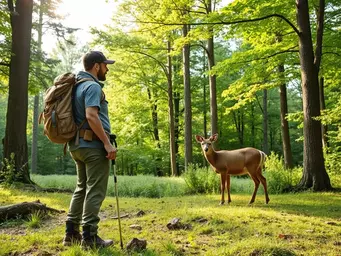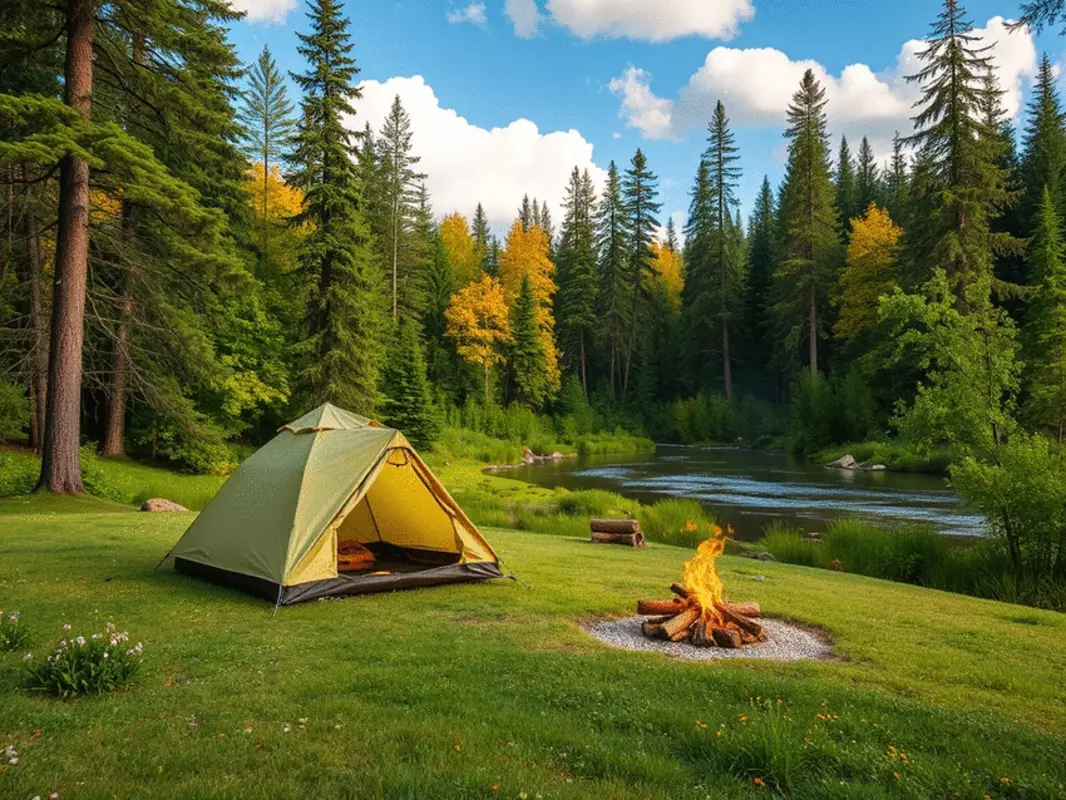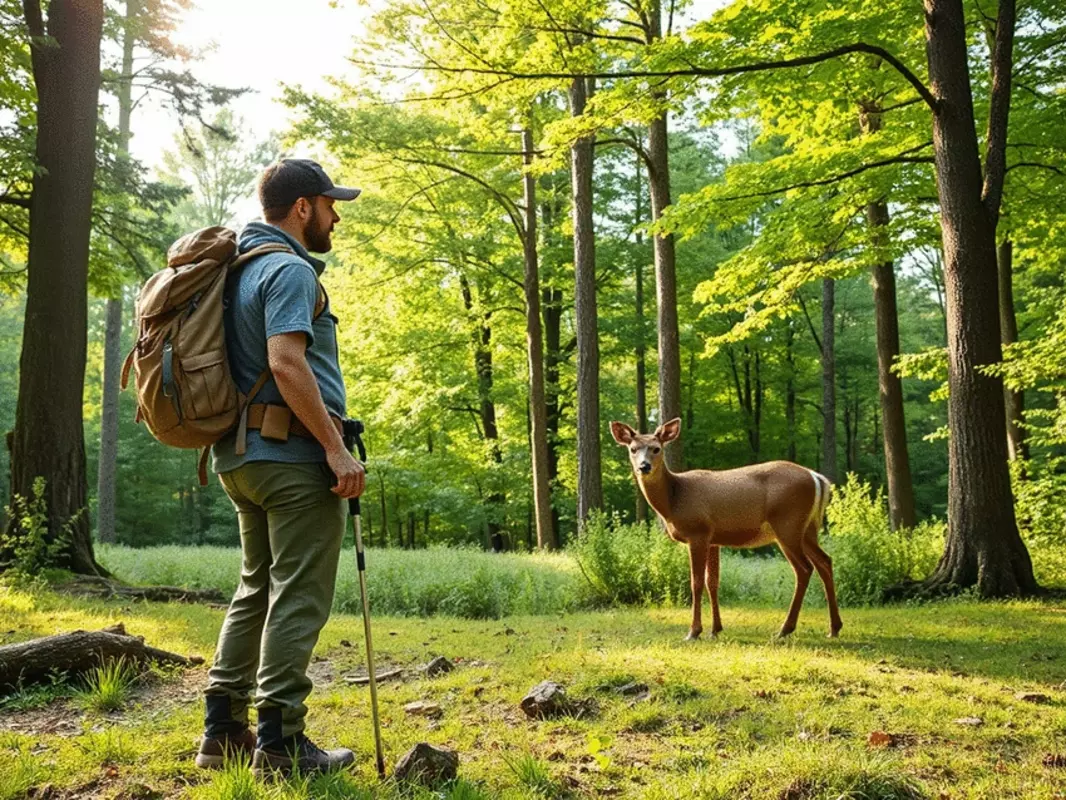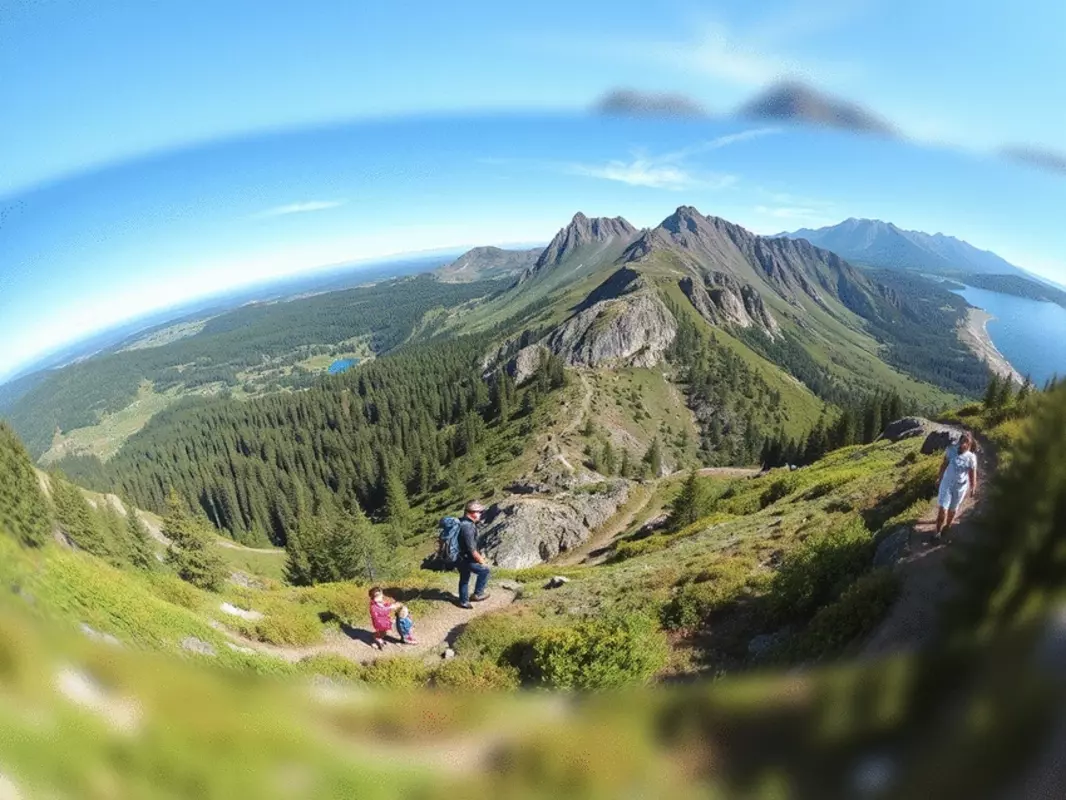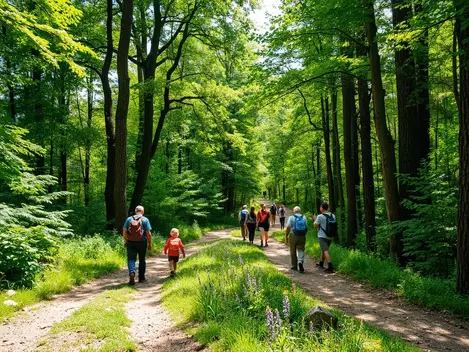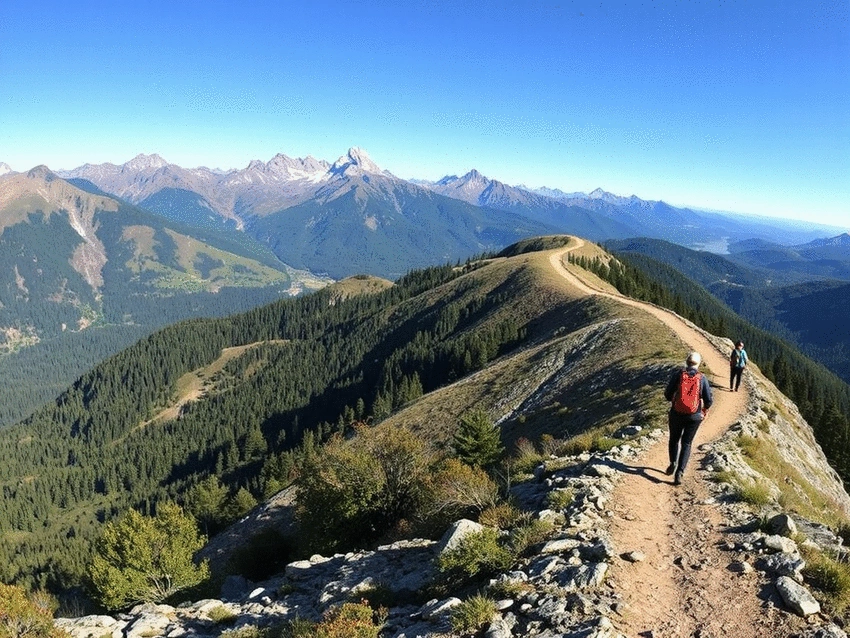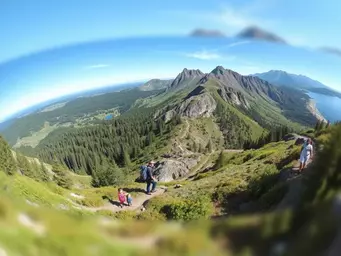Select Your Ideal Hiking Destination

Before you hit the trails, understanding your hiking skills and preferences can transform your outdoor experience. Whether you're a seasoned hiker or just starting, knowing your abilities and adventure style makes all the difference. Let’s explore the key insights that will guide you on your next hiking journey.
What You Will Learn
- Self-assessing your hiking skills helps in selecting suitable trails for a safer and more enjoyable experience.
- Understanding different adventure styles—from day hikes to multi-day treks—can help you choose the right hiking experience.
- Recognizing trail difficulty is essential; beginner trails are great for building confidence, while advanced trails offer a thrilling challenge.
- Preparation, like gear selection and safety considerations, is crucial to ensure a successful hiking adventure.
- Environmental factors, such as weather changes, can significantly impact your hiking plans, so always check conditions ahead of time.
Hiking Trail Difficulty & Experience Match
This visual outlines the typical characteristics of hiking trails based on difficulty and the corresponding gear and planning considerations.
Beginner Trails
- Distance: 1-3 miles
- Terrain: Flat or gently rolling hills
- Elevation: Minimal
- Gear: Comfortable sneakers, small daypack, water
- Planning: Basic hydration, check weather
Intermediate Trails
- Distance: 4-8 miles
- Terrain: Varied, rocky/uneven sections
- Elevation: 500-1,500 feet (Moderate)
- Gear: Hiking boots, map, light jacket
- Planning: Familiarize with map, weather awareness
Advanced Trails
- Distance: Exceeding 8 miles
- Terrain: Challenging, rugged, steep inclines
- Elevation: Over 1,500 feet (Significant)
- Gear: Durable boots, high-quality backpack, technical gear
- Planning: Topographical maps, emergency prep
Key Takeaways
- Match Skill: Align trail to personal ability
- Adventure Style: Choose based on preferences
- Gear Up: Select appropriate equipment
- Stay Safe: Prioritize hydration, navigation, weather
- Community: Join clubs for support
Understanding Your Hiking Skills and Adventure Preferences
Before lacing up your boots and hitting the trails, it’s essential to understand your hiking skills and what kind of adventures excite you. Knowing your abilities helps in selecting trails that match your experience, ensuring a safer and more enjoyable outing. I always recommend taking a moment to reflect on your past hikes and fitness level to gauge where you stand.
Consider your hiking history: have you tackled steep inclines or enjoyed leisurely strolls on flat paths? This self-assessment not only informs your choice of trails but also enhances your outdoor experience by challenging you just enough without pushing your limits too far.
Assessing Your Hiking Skill Level
Evaluating your hiking skills can be straightforward. Here are some tips to help you assess:
- Track Your Experiences: List the hikes you’ve completed, noting distance, terrain, and duration.
- Fitness Level: Consider your overall fitness. Are you comfortable walking several miles without fatigue?
- Technical Skills: Assess your proficiency with navigation tools or dealing with various terrains.
Understanding these factors sets the groundwork for choosing trails that suit your abilities. Remember, pushing yourself is great, but it should be balanced with your comfort level for the best hiking experience!
Identifying Your Adventure Style
Your adventure style significantly influences your hiking choices. Here are some popular styles that might resonate with you:
- Day Hikes: Perfect for those looking for a quick escape into nature, these hikes usually last a few hours.
- Multi-Day Treks: Ideal for adventurers wanting to immerse themselves in the wilderness over several days.
- Nature Photography Focused: Great for those who prefer to explore slow and capture the beauty of nature.
Recognizing your adventure style can help narrow down your destination choices. For instance, if you relish the chance to camp overnight, multi-day treks will likely appeal to you more than a simple day hike!
Classifying Hiking Trails by Difficulty
Beginner Hiking Trails: What to Expect
If you're just starting out, beginner trails are a fantastic way to build confidence. These paths typically feature shorter distances, gentle terrains, and minimal elevation gain. When I first started hiking, I found locations like local state parks to be perfect for learning the ropes.
Here are some characteristics of beginner trails:
- Distance: Usually between 1-3 miles.
- Terrain: Flat or gently rolling hills.
- Elevation Gain: Minimal, making it easier to manage.
Some great beginner trails to consider include the Scenic Loop Trail and the Meadow Path in your local national park. These trails offer stunning views without the overwhelming physical challenge!
Intermediate Hiking Trails: Finding the Right Challenge
Once you've gained a bit more experience, it's time to explore intermediate hiking trails. These typically feature moderate elevation changes and longer distances, offering a rewarding challenge. I remember feeling accomplished after conquering my first intermediate hike!
- Distance: Ranges from 4-8 miles.
- Terrain: Varied, with some rocky or uneven sections.
- Elevation Gain: Moderate, generally between 500-1,500 feet.
Popular intermediate trails include the Ridge Trail and the Forest Loop, which provide the perfect balance of challenge and enjoyment. They not only test your abilities but also reward you with breathtaking views!
Advanced Hiking Trails: For the Experienced Trekker
For those who thrive on a challenge, advanced hiking trails are designed for experienced trekkers. Expect steep ascents, rugged terrains, and perhaps even some technical routes. I’ve had my share of adventures on these trails, and they never cease to thrill me!
- Distance: Often exceeding 8 miles.
- Terrain: Challenging, featuring rocks, roots, and steep inclines.
- Elevation Gain: Significant, often over 1,500 feet.
Some iconic advanced trails include the Half Dome in Yosemite and the Inca Trail in Peru. They are breathtaking but require careful preparation and respect for the elements!
Destination Recommendations Tailored to Skill Levels
Top National Parks for Every Skill
National parks are treasure troves of diverse trails suited for all skill levels. Parks like Yosemite and Denali offer a range of experiences, contributing to the millions of national park visits annually:
- Beginner: Yosemite Valley Floor Loop
- Intermediate: Mirror Lake Trail
- Advanced: Yosemite’s Half Dome
Each park boasts a unique landscape and atmosphere, ensuring that there’s something for everyone. Whether you're just starting or seeking your next adventure challenge, these parks deliver! For more inspiration, you can explore some of the most beautiful hikes in national parks.
International Trails Worth Exploring
If you're dreaming of hiking beyond U.S. borders, several international destinations are worth considering. Trails like Kumano Kodo in Japan and Torres del Paine in Chile offer unforgettable experiences:
- Kumano Kodo: Suitable for all skill levels, known for its stunning scenery and cultural significance.
- Torres del Paine: Offers challenging routes for advanced hikers, with breathtaking landscapes.
These trails not only challenge your skills but also immerse you in the rich tapestry of their surrounding cultures. Exploring these locations can be a transformative experience!
Preparation Essentials for a Successful Hiking Experience
Gear Selection Based on Skill and Trail Difficulty
Choosing the right gear is vital to enjoy your hiking experience. Depending on your skill level and the trail difficulty, here are some essentials to consider:
- Beginner Gear: Comfortable sneakers, a small daypack, and plenty of water.
- Intermediate Gear: Hiking boots, a reliable map, and a light jacket.
- Advanced Gear: Durable boots, a high-quality backpack, and technical gear (e.g., climbing equipment).
Each hike presents different demands, so it’s crucial to tailor your gear to match the specific adventure you’re undertaking. Remember, comfort translates to enjoyment!
Safety Considerations and Planning Tips
Prioritizing safety while hiking is non-negotiable. Here are some key tips to keep in mind:
- Hydration: Always carry enough water, especially on warmer days.
- Navigation: Familiarize yourself with the trail map before you set out.
- Weather Awareness: Check forecasts and prepare for sudden changes.
Being prepared will help you handle unexpected situations, allowing you to focus on enjoying your time in nature. Remember, a well-planned hike is a successful hike!
Environmental and Seasonal Factors Affecting Trails
Weather can significantly impact trail conditions. Rain, snow, and temperature fluctuations can alter the hiking experience:
- Rain: Can make trails slippery and challenging.
- Snow: Might require special gear or limit access to certain trails.
- Seasonal Changes: Understand how different seasons affect trail accessibility.
Planning your hikes according to these factors ensures you have a safe and enjoyable experience. Always check conditions before you go!
Utilizing Topographical Maps for Trail Navigation
Understanding how to read topographical maps is a valuable skill for all hikers. These maps reveal crucial information about elevation changes and trail difficulty:
- Contour Lines: Indicate elevation; closer lines mean steeper terrain.
- Landmarks: Familiarize yourself with landmarks on the map to aid navigation.
- Trail Markings: Recognize how trails are represented on the map for safer exploration.
Being proficient with maps can enhance your overall hiking experience, allowing you to explore with confidence!
Finding Local Hiking Clubs and Online Forums for Community Support
Connecting with fellow hikers can enrich your outdoor experiences. Joining local hiking clubs or participating in online forums can provide:
- Shared Knowledge: Learn about the best trails and gear recommendations from seasoned hikers.
- Support: Enjoy camaraderie and motivation from fellow outdoor enthusiasts.
- Group Hikes: Join organized hikes to explore new trails safely.
Being part of a hiking community not only enhances your adventures but also fosters friendships and shared experiences. Get involved and enjoy the journey together! Many cities offer excellent hiking opportunities, making it easier to find local groups.
Pro Tip
As you embark on your hiking adventures, remember to consistently monitor your physical condition and adapt your trail choices accordingly. Keeping a hiking journal can help you track your progress, noting what trails challenged you and which ones provided the most joy. This reflection not only enhances your skills but also enriches your overall hiking experience!
Frequently Asked Questions (FAQs)
Q1: How do I assess my hiking skill level?
A1: You can assess your hiking skill level by tracking your past experiences (distance, terrain, duration), evaluating your overall fitness, and noting your proficiency with navigation tools and varied terrains.
Q2: What are the main types of adventure styles in hiking?
A2: Common adventure styles include day hikes for quick escapes, multi-day treks for immersive wilderness experiences, and nature photography focused hikes for those who enjoy capturing natural beauty.
Q3: What distinguishes beginner, intermediate, and advanced hiking trails?
A3: Beginner trails are typically 1-3 miles with flat terrain and minimal elevation. Intermediate trails range from 4-8 miles with varied terrain and moderate elevation (500-1,500 feet). Advanced trails exceed 8 miles, featuring rugged terrain and significant elevation gain (over 1,500 feet).
Q4: What gear is recommended for different trail difficulties?
A4: For beginner trails, comfortable sneakers, a small daypack, and water are sufficient. Intermediate trails require hiking boots, a map, and a light jacket. Advanced trails necessitate durable boots, a high-quality backpack, and technical gear like climbing equipment.
Q5: Why is it important to consider environmental factors before hiking?
A5: Environmental factors like rain, snow, and temperature fluctuations can significantly impact trail conditions and accessibility, affecting safety and enjoyment. Checking forecasts and preparing for changes is crucial for a successful hike.
Key Takeaways for Choosing Your Hiking Destination
As we wrap up our exploration into the world of hiking, it's essential to summarize the key points we've discussed. Finding the right hiking destination is all about matching your skill level and adventure style with the trails you choose. Whether you’re a beginner looking for friendly paths or an experienced trekker seeking rugged challenges, understanding your personal capabilities is crucial.
Remember, the best hikes come from a blend of the right preparation and the perfect fit for your unique preferences. Consider these essential factors:
- Your current hiking skill level
- The type of adventure that excites you
- The specific demands of each trail
- Environmental conditions that may affect your experience
By considering these elements, you can ensure that each hiking experience is not only safe but also incredibly rewarding! So, take a moment to reflect on what you've learned and how it can guide your next outdoor adventure.
Encouragement to Begin Your Hiking Adventure
Now that you have all this valuable information at your fingertips, it’s time to start planning your next hike! The joy of discovering trails that suit your skills and preferences is unmatched. At Backpack Hiking, we believe in empowering you to connect with nature, and embarking on a new trail is one of the best ways to do that!
As you prepare, don’t forget to take advantage of the resources available through our community. Share your experiences, ask questions, and find inspiration from fellow outdoor enthusiasts. So, what are you waiting for? Lace up those hiking boots and get ready to explore the great outdoors! Adventure awaits!
Recap of Key Points
Here is a quick recap of the important points discussed in the article:
- Understand your hiking skills and adventure preferences to select suitable trails.
- Assess your hiking skill level by tracking experiences, fitness, and technical skills.
- Identify your adventure style, whether it be day hikes, multi-day treks, or nature photography focused hikes.
- Choose hiking trails based on difficulty: beginner, intermediate, and advanced.
- Prepare adequately by selecting the right gear tailored to your skill level and trail difficulty.
- Prioritize safety by staying hydrated, understanding navigation, and being aware of weather conditions.
- Connect with local hiking clubs and online forums for community support and shared experiences.

